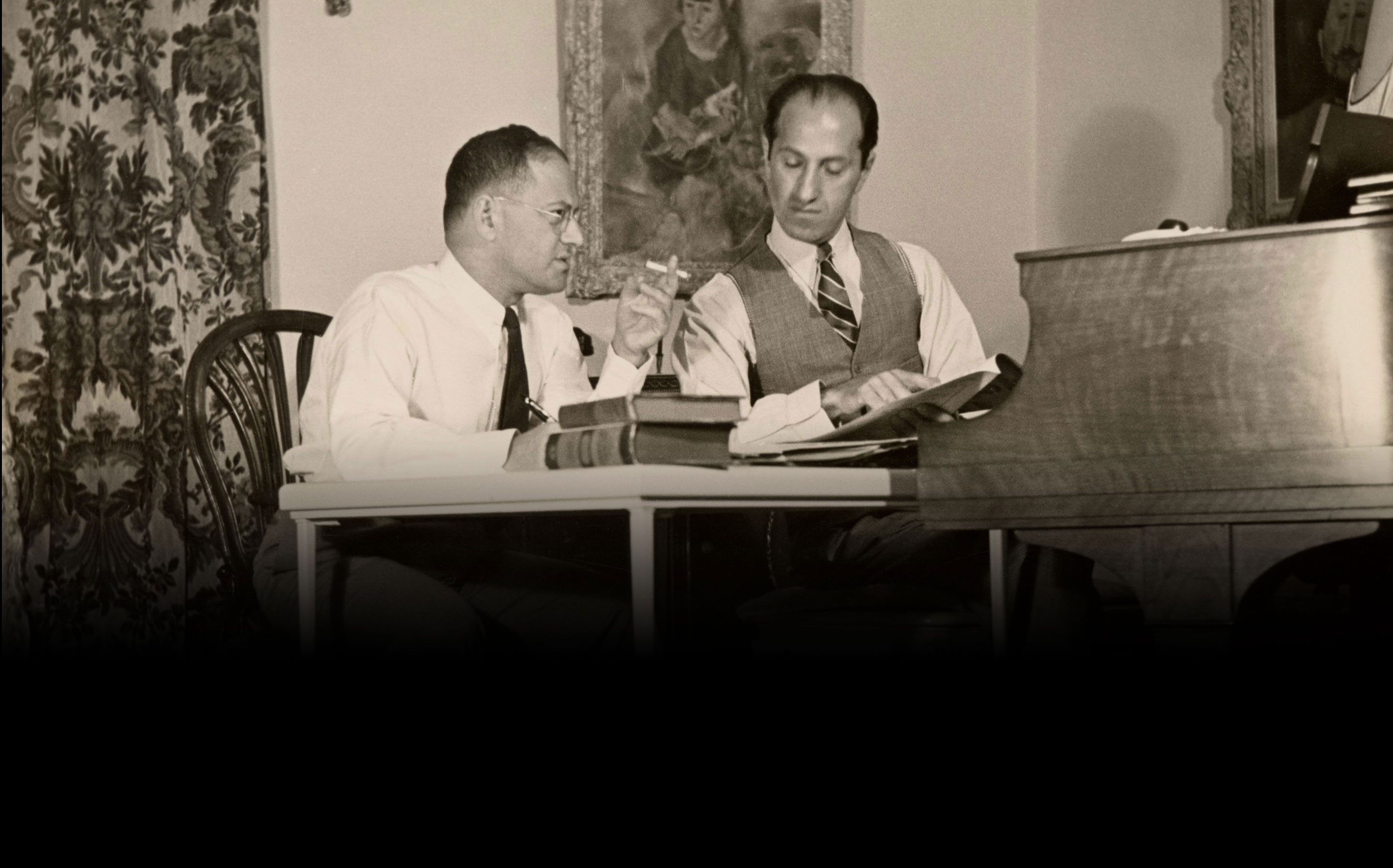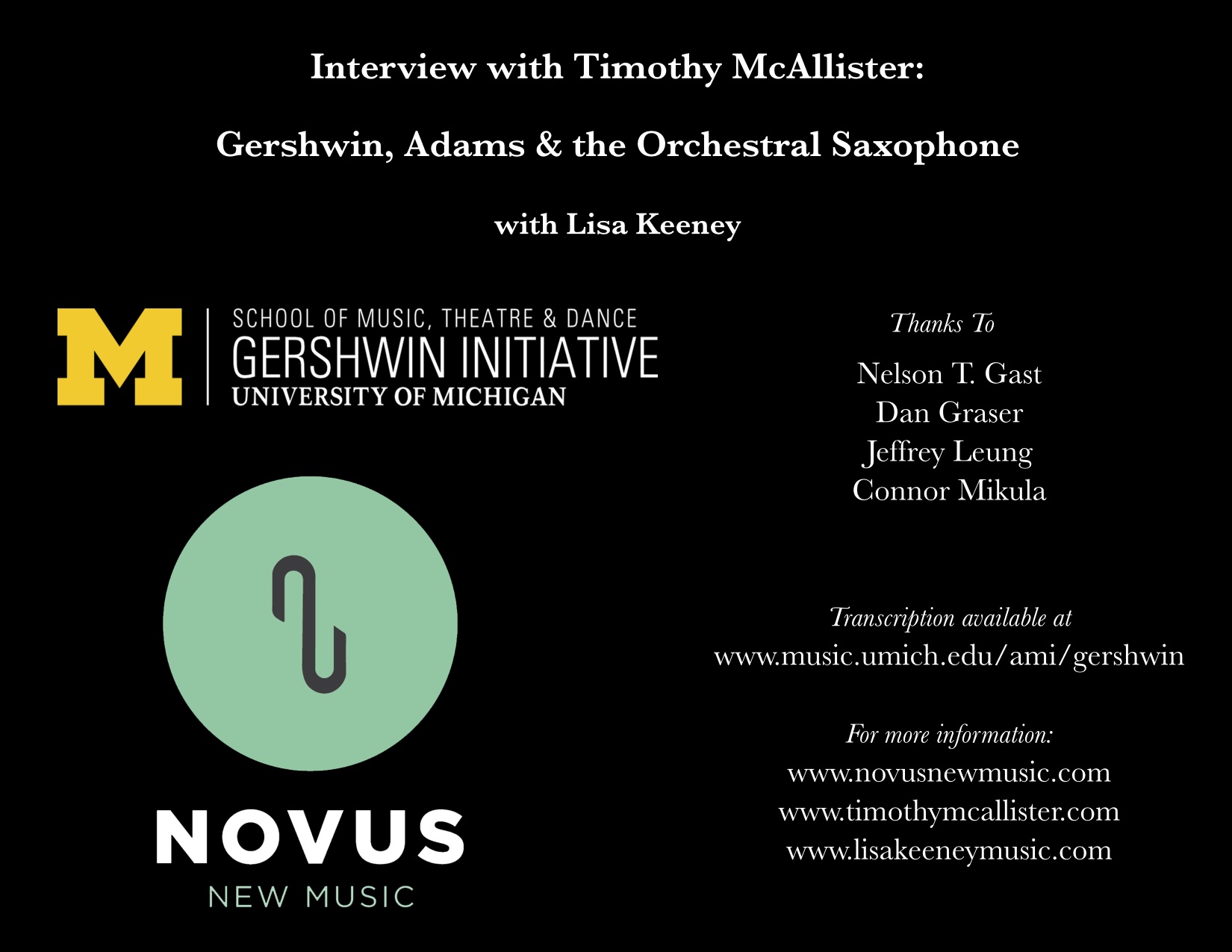Interview with Timothy McAllister: Gershwin, Adams, and the Orchestral Saxophone
The Gershwin Initiative’s own Lisa Keeney (lead editorial assistant and saxophonist) sat down in August 2016 to talk with Grammy award-winning saxophonist Timothy McAllister as a promotion for our September 2016 concert with the University of Michigan’s University Symphony Orchestra (USO). The USO premiered both the new edition of Concerto in F and the Unabridged Edition of An American in Paris. This program also featured Adams’ The Chairman Dances, and his Saxophone Concerto with soloist Timothy McAllister, for whom the concerto was written.
We are delighted today to bring you the extended cut of the interview. It is broken into three parts where McAllister and Keeney discuss the role the saxophone has had in the orchestra, and in the works of Gershwin and Adams. For a transcription of the full interview click here: McAllister Interview Transcription. Thank you Lisa for your hours transcribing the interview and to Novus New Music for their support! Hopefully saxophone students and enthusiasts alike will find this interview enjoyable and informative.
Part 1: The Orchestral Saxophone
But he [Berlioz] always saw the instrument as this symbol of melancholy—this sound, this somber sound, this deep timbre, this soulful quality that he heard in those instruments. I think as a result, composers were really curious, or maybe stupefied, about how they were going to use it. And so it takes a while for there to be an identity for how saxophone can be used in the orchestra. – McAllister
Part 2: Gershwin and the Saxophone
What’s particularly exciting about these new revisions, the unabridged versions that we are producing, is that it’s putting the saxophone back in its rightful place. It’s asking more of the players: to, in essence, be more accountable to Gershwin’s initial, original intent for the instrument, and I think as a result, we’ll raise the bar on performance from the saxophone community. – McAllister
Part 3: Adams and the Saxophone
John Adams in some ways is this natural trajectory from how all of these composers were tapping into the instrument’s culture. For John Adams, and he has said it himself, the saxophone is emblematic—it is THE emblem of jazz. – McAllister


Great interview! Timothy seems like a really nice person.
great interview, Timothy very friendly here once